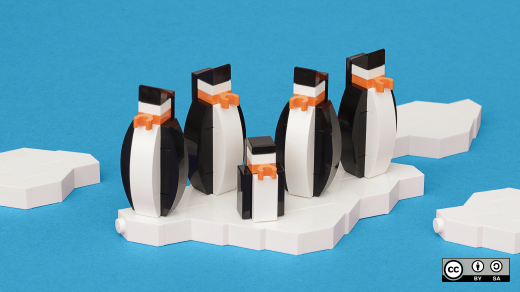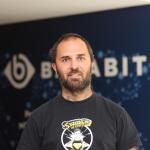On August 25, 1991, Linux 0.01 was announced. All of us have a story to tell about Linux. I told my story a couple of months ago, but for those who weren't here: My first exposure to Linux was when my grassroots hospice organization moved from paper to digital charting. We didn't have the funding to get something proprietary, but the IT department had Linux set up on our old machine, and we used the GNOME desktop and OpenOffice to start our journey in creating digital assets.
I recently asked some Opensource.com authors this simple question:
What was your first Linux experience?
From VAX to Linux
For my junior year of high school, I was shipped off to a state-run "nerd farm" (that's the North Carolina School of Science and Mathematics.) Our first day on campus, the juniors were each assigned a senior big brother or sister. My senior big sister ditched me because she had tickets to go to a big outdoor music festival with her boyfriend, but when they came back all sunburned, we hung out in my mostly empty dorm room eating takeout on the floor. That was when I first met Matt.
As the year wound on, Matt showed me how to help as a student sysadmin changing backup reels for the VAX mainframe and doing basic tasks on the "big" workstation that doubled as a campus-wide UNIX server. He had a PC in his room, with GNU and XWindows on a Minix kernel, but found this cool new alternative that some Finnish student had started posting the source code for on Usenet. I knew, right then and there, that was my future.
When I got home for the summer, the first thing I did was buy a shiny new 486 with some of my savings from odd jobs, fired up a SLIP connection through our local BBS, and downloaded and decoded all the bits and pieces I'd need to bootstrap and compile Linux 0.96.
Matt and I mostly lost touch after he graduated, but I'll always owe him for introducing me to the operating system kernel I'd use for the rest of my life. I think of him every time I see that tattered old copy of Running Linux adorning my office shelf.
The "Matt" in this story is Matthew D. Welsh. After we lost touch, he became the original maintainer of The Linux Documentation Project, and the author of the first edition of the O'Reilly Press book Running Linux.
Computer club
Friends at a computer club inspired me to try Linux.
I used Linux to help students learn more about other operating systems from 2012 to 2015, and I would say that Linux has taught me more about computers in general.
It has probably affected my "volunteer career" because to this day I write articles about being a neurodiverse person in the Linux world. I also attend and join different Linux events and groups, so I've had access to a community I probably wouldn't have known otherwise.
Galaxy
My Linux story started a long time ago in a galaxy far, far away. In the early 90s, I spent a year in the US as a high school student. Over there, I had access to e-mail and the Internet. When I came back home to Hungary, I finished high school without any Internet access. There were no public Internet providers in Hungary at that time. Only higher education, and some research labs, had Internet. But in 1994, I started university.
The very first week of school, I was at the IT department asking for an email address. At that time, there was no Gmail, Hotmail, or anything similar. Not even teachers got an email address automatically at the university. It took some time and persistence, but I eventually received my first university email address. At the same time, I was invited to work in the faculty-student IT group. At first, I got access to a Novell and a FreeBSD server, but soon I was asked to give Linux a try.
It was probably late 1994 when I installed my first Linux at home. It was Slackware, from a huge pile of floppy disks. At first, I only did a minimal installation, but later I also installed X so I could have a GUI. In early 1995, I installed my first-ever Linux server at the university on a spare machine, which was also the first Linux server at the university. At that time, I used the Fvwm2 window manager both at home and at the university.
At first, I studied environmental protection at the university, but my focus quickly became IT and IT security. After a while, I was running all the Linux and Unix servers of the faculty. I also had a part time job elsewhere, running web and e-mail servers. I started a PhD about an environmental topic, but I ended up in IT. I've worked with FreeBSD and Linux ever since, helping sudo and syslog-ng users.
Education
I got introduced to Linux in the late 1990s by my brother and another friend. My first distro was Red Hat 5, and I didn't like it at the time. I couldn't get a GUI running, and all I could see was the command-line, and I thought, "This is like MS-DOS." I didn't much care for that.
Then a year or more passed, and I picked up a copy of Red Hat 6.1 (I still have that copy) and got it installed on and HP Vectra with a Cyrix chip installed. It had plenty of hard disk space, which was fortunate because the Red Hat Linux software came on a CD. I got the GUI working, and set it up in our technology office at the school district I was employed at. I started experimenting with Linux and used the browser and Star Office (an ancestor of the modern LibreOffice), which was part of the included software.
A couple years later, our school district needed a content filter, and so I created one on an extra computer we had in our office. I got Squid, Squidguard, and later Dansguardian installed on Linux, and we had the first self-hosted open source content filter in a public school district in Western New York State. Using this distribution, and later Mandrake Linux (an ancestor of Mageia Linux) on old Pentium II and Pentium III computers, I set up devices that used SAMBA to provide backup and profile storage for teachers and other staff. Teaming with members of area school districts I set up spam filtering for a fraction of the cost that proprietary solutions were offering at the time.
[ Related read 12 essential Linux commands for beginners ]
Franklinville Central School District is situated in an area of high rural poverty. I could see that using Linux and open source software was a way to level the playing field for our students, and as I continued to repurpose and refurbish the "cast-off" computers in our storage closets, I built a prototype Linux terminal server running Fedora Core 3 and 4. The software was part of the K12LTSP project. Older computers could be repurposed and PXE booted from this terminal server. At one point, we had several computer labs running the LTSP software. Our staff email server ran on RHEL 2.1, and later RHEL 3.0.
That journey, which began 25 years ago, continues to this day as I continue to learn and explore Linux. As my brother once said, "Linux is a software Erector set."
Out in the open
My first experience with Linux was brief, and it involved a lot of floppies. As I recall, it was entertaining until my dear wife discovered that her laptop no longer had Windows 98 installed (she was only moderately relieved when I swapped back in the original drive and the "problem" disappeared). That was around 1998, with a Red Hat release that came with a book and a poor unsuspecting ThinkPad.
But really, at work I always had a nice Sun Workstation on my desktop, so why bother? In 2005, we decided to move to France for a while, and I had to get a (usefully) working Toshiba laptop, which meant Linux. After asking around, I decided to go with Ubuntu, so that was my first "real" experience. I think I installed the first distro (codenamed Warty Warthog,) but soon I was on the latest. There were a few tears along the way, caused mostly by Toshiba's choice of hardware, but once it was running that darned laptop was every bit as fast, and way more functional, for me than the old Sun. Eventually, we returned home, and I had a nice new Dell PC desktop. I installed Feisty Fawn, and I've never looked back.
I've tried a few other distros, but familiarity has its advantages, particularly when configuring stuff at the lowest of levels. Really though, if forced to switch, I think I would be happy with any decent Linux distro.
At a few points in time, I have had to do "kernel stuff", like bisecting for bugs and fiddling around with device drivers. I really can't remember the last time something that complicated was necessary, though.
[ Also read How to tune the Linux kernel with the /proc filesystem ]
Right now, I have two desktops and one laptop, all running Ubuntu 22.04, and two aging Cubox i4-pro devices running Armbian, a great Debian-based distro created for people using single-board computers and similar devices. I'm also responsible for a very small herd of various virtual private running several distros, from CentOS to various versions of Ubuntu. That's not to mention a lot of Android-based stuff laying around, and we should recognize that it's Linux, too.
What really strikes me, as I read this back over, is how weird it all must sound to someone who has never escaped the clutches of a proprietary operating system.
Getting involved
The first computer I bought was an Apple, the last Apple was a IIe. I got fed up with the strong proprietorship of Apple over the software and hardware, and switched to an Amiga, which had a nice GUI (incidentally, I have never owned another Apple product.)
Amiga eventually crumbled, and so I switched to Windows—what an awful transition! About this time, somewhere in the mid- to latter-90s, I was finding out about Linux, and began reading Linux magazines and how to set up Linux machines. I decided to set up a dual-boot machine with Windows, then bought Red Hat Linux, which at the time came on a number of floppy disks. The kernel would have been 2.0-something. I loaded it on my hard drive, and Presto! I was using Linux—the command-line. At that time, Linux didn't read all of your hardware and make automatic adjustments, and it didn't have all the drivers you needed, as it does today.
So next came the process of looking up in BBSes or wherever to find out where to get drivers for the particular hardware I had, such as the graphics chip. Practically, this meant booting into Windows, saving the drivers to floppy disk, booting back into Linux, and loading the drivers to the hard drive. You then had to hand-edit the configuration files so that Linux knew which drivers to use. This all took weeks to accomplish, but I can still recall the delight I felt when I typed startx, and up popped X-Windows!!
If you wanted to update your kernel without waiting for and buying the next release, you had to compile it yourself. I remember I had to shut down every running program so the compiler didn't crash.
It's been smooth sailing ever since, with the switch to Fedora (then called "Fedora Core"), and the ease of updating software and the kernel.
Later, I got involved with the Scribus project, and I started reading and contributing to the mail list. Eventually, I began contributing to the documentation. Somewhere around 2009, Christoph Schaefer and I, communicating over the internet and sharing files, were able to write Scribus, The Official Manual in the space of about 9 months.













5 Comments